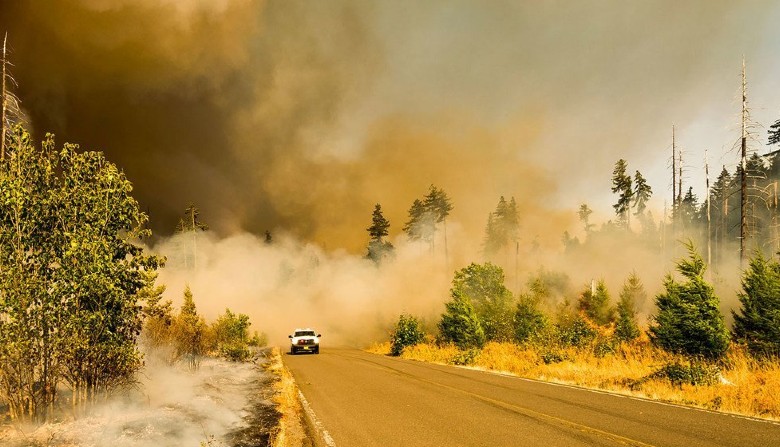The world experienced record temperatures last month, but they were also abnormal: while in Europe and the United States those records were broken by high thermometers and burning forests, in the Horn of Africa, southern India, much of Asia, Central America and Australia recorded temperatures below average. -flat.
Amid extreme heat, drought and wildfires, many parts of the world have just experienced one of the three hottest Julys on record, the World Meteorological Organization said yesterday. Temperatures across much of Europe are about 0.4 degrees Celsius above the average for 1991-2020. Due to the intense heatwave in mid-July, the Southwest and Western Europe were on average the highest.
“This is despite the fact that La Niña events are meant to have a refreshing impact,” explains spokeswoman for the Organization, Claire Nullis. “We are seeing this in some places, but not globally,” he added. Nullis explains that 2002 was “one of the three hottest Julys on record; slightly below what was experienced in 2019 and somewhat warmer than 2016, although the difference is too thin to be decisive.”
temperature record
Portugal, western France and Ireland broke records, while England hit 40 degrees for the first time in their history. Wales and Scotland also broke national records for daily maximum temperatures.
Spain, in turn, recorded its hottest month of July, with a national average temperature of 25.6 degrees and a heatwave lasting from July 8 to 26, this being the most intense and lasting heatwave on record. Using data from the European Commission’s Copernicus Climate Change Service, the UN’s weather agency confirmed that Europe experienced the sixth hottest July ever. Heat is moving north and east, marking very high temperatures in other countries, such as Germany and parts of Scandinavia, with local July and all-time records in some locations in Sweden.
temperature anomaly
At the same time, from the Horn of Africa to southern India, and much of Central Asia to much of Australia, temperatures are below average. These temperatures also dominate a swathe of territory that stretches from Iceland, through Scandinavia and the Baltic states, to the Caspian Sea. In addition, temperatures in Georgia and most of Turkey are generally below average.
Polar ice is shrinking
July also saw the lowest recorded Antarctic sea ice in history, found 7% below average. Arctic sea ice is 4% below average, ranking 12th out of all July, according to satellite records. The glacier has had a “brutal and brutal summer,” Nullis continued.
“According to the meteorological service, we started with a slight accumulation of snow on the glaciers of the Alps, and now we have successive heatwaves. This is bad news for European glaciers. However, the picture of Greenland’s glaciers is more mixed, as there is no unrelenting heat.” Amid the heat, WMO Secretary General Petteri Taalas said at a press conference on June 18 that “heat waves of this kind are the new normal.”
“Heatwaves are becoming more common due to climate change,” says Petteri Taalas, who, using the analogy of exercise, explains that we have doped the atmosphere by injecting more greenhouse gases, especially carbon dioxide, so warming and other trends “will continue at least at least.” 2060, regardless of whether or not we succeed in mitigating climate change.”
“In the future this type of heatwave will normalize and we will see stronger extremes. We have released so much carbon dioxide into the atmosphere that the negative trend will continue in the coming decades and for now we have not been able to reduce our global emissions”, the expert stressed at a press conference to analyze the current heatwave in Europe, co-organized with the Organization World Health Organization (WHO).
health effects
Taalas recalled that in 2003 a heat wave killed 75,000 people in Europe and stressed that, although now there are better ways of adaptation, the Organization expects an increase in mortality among the elderly and people with the previous condition.
Dr María Neira, from the World Health Organization, also spoke at a press conference about how it affects us humans medically, pointing out that heat waves pose a challenge because when the temperature reaches 41 degrees it is something overwhelming and the body has to struggle to maintain its internal temperature. stable.
This struggle in turn results in fatigue, heat stroke, hypertension, hyperthermia and behavioral changes, exacerbated by lack of a night’s rest, which even affects mental health.

“Internet trailblazer. Troublemaker. Passionate alcohol lover. Beer advocate. Zombie ninja.”







